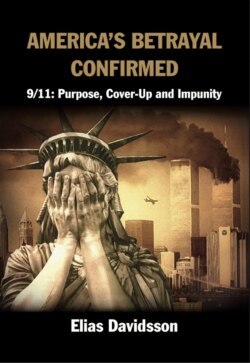Читать книгу America's Betrayal Confirmed - Elias Davidsson - Страница 18
На сайте Литреса книга снята с продажи.
(8) The need for a traumatic event
ОглавлениеIn order to unite the population behind a pro-active foreign policy, which the United States sought to pursue, it was not sufficient for U.S. leaders to promote a threat that does not bite: a real, traumatic and catalyzing event was necessary. This necessity was recognized early on by leading U.S. strategists, such as Zbigniew Brzezinski.
Brzezinski, foreign policy advisor to several U.S. presidents, recognized in the 1990s the difficulty for a democratic regime to mobilize its population behind imperial policies except after a sudden and shocking event. In his often-quoted book The Grand Chessboard, he wrote:
Democracy is inimical to imperial mobilization…[T]he pursuit of power is not a goal that commands popular passion, except in conditions of a sudden threat or challenge to the public’s sense of domestic well-being.{63} The public supported America’s engagement in World War II largely because of the shock effect of the Japanese attack on Pearl Harbor.{64}
The authors of a report titled “Rebuilding America's Defenses: Strategy, Forces and Resources For a New Century,” published in September 2000 by the “Project For a New American Century (PNAC),“ also referred to Pearl Harbor as a “catastrophic and catalyzing event,” necessary to accelerate the process of transforming U.S. forces to exploit the “revolution in military affairs.”{65}
In the 1950s the CIA conducted psychological experiments on unsuspecting citizens designed to control their behavior through exotic drugs, electro-shock, radiation and other means.{66} Eighty institutions were involved in the program, dubbed MKUltra, including forty-four universities and twelve hospitals.”{67} The effect of these experiments was to cause among the subjects a state of dis- orientation, regression and dependency upon the examiner. A general shock doctrine was later developed by economist Milton Friedman and applied on an entire nation, Chile, in 1973. The economic shock doctrine included a drastic reduction of living standards accompanied by overt and ruthless political repression against anyone resisting this shock doctrine. The extent and brutality of this repression led to their designation as crimes against humanity. The method was later copied to other countries, including Argentina, Brazil, Uruguay and Indonesia, in order to serve corporate interests. In Indonesia the killings reached genocidal proportions.
In her book called The Shock Doctrine, Naomi Klein correctly highlights the similarity of the shock doctrine, as applied to entire nations, to the process of torture. The shock doctrine achieves “on a mass scale what torture does one on one in the interrogation cell. The clearest example was the shock of 11 September, which, for millions of people [...] opened up a period of deep disorientation and regression that the Bush administration expertly exploited.”{68} Although the author claimed in her book, published in 2007, that the corporate world “does not deliberately scheme to create the cataclysms on which it feeds,”{69} the facts filling her book provide evidence to the contrary, namely that certain shocks are indeed planned before they occur, particularly where they serve foreseeable benefits.
Philip D. Zelikow, who later became the Executive Director of the 9/11 Commission, and his co-authors Ash Carter and John M. Deutsch, designated catastrophic terrorism in a paper they published in 1998 as the “new danger” facing America. They also spelled out its implications and consequences, as if they already had it all planned:
Such an act of catastrophic terrorism would be a watershed event in American history. It could involve loss of life and property unprecedented in peacetime and undermine America’s fundamental sense of security, as did the Soviet atomic bomb test in 1949. Like Pearl Harbor, this event would divide our past and future into a before and after. The United States might respond with draconian measures, scaling back civil liberties, allowing wider surveillance of citizens, detention of suspects, and use of deadly force. More violence could follow, either further terrorist attacks or U.S. counterattacks. Belatedly, Americans would judge their leaders negligent for not addressing terrorism more urgently.{70}
Not only did catastrophic terrorism occur on 11 September 2001, but it was followed by precisely those measures the above authors had described in 1998: 9/11 was immediately described by U.S. leaders as a watershed event in American history, allowed wider surveillance of citizens, the erosion of civil liberties and the use of deadly force. The event also caused the American people to rally around the flag and support war, as they did after Pearl Harbor. Did Osama bin Laden heed the desires of U.S. strategists by presenting the United States with a new Pearl Harbor on a silver platter? Or were Zelikow and his co-authors merely prescient?
